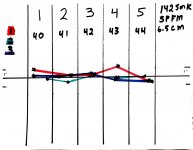Yea we got it . You say that same statement about almost every post for a year now . If you can contribute to the tuner with your testing then by all means please do so . But if you are going to repeat the same posts over and over , then that is not helping .. the intent is to help shooters adjust tuners , not to discuss your version of testing .
My own testing won't be able to control all the variables - just like the vast majority of individuals. A simple waterline can't draw the conclusions we are asking it to do in this thread.
Anyways, I only posted because someone asked. This is a discussion forum - I feel like open discussion from all perspectives is allowed. And tuners will only be able to advance if those advocating them open themselves up to questions and critique.
I have no skin in this fight. I'm out.


